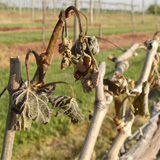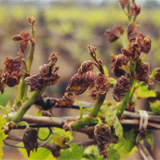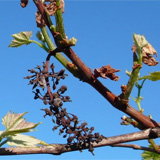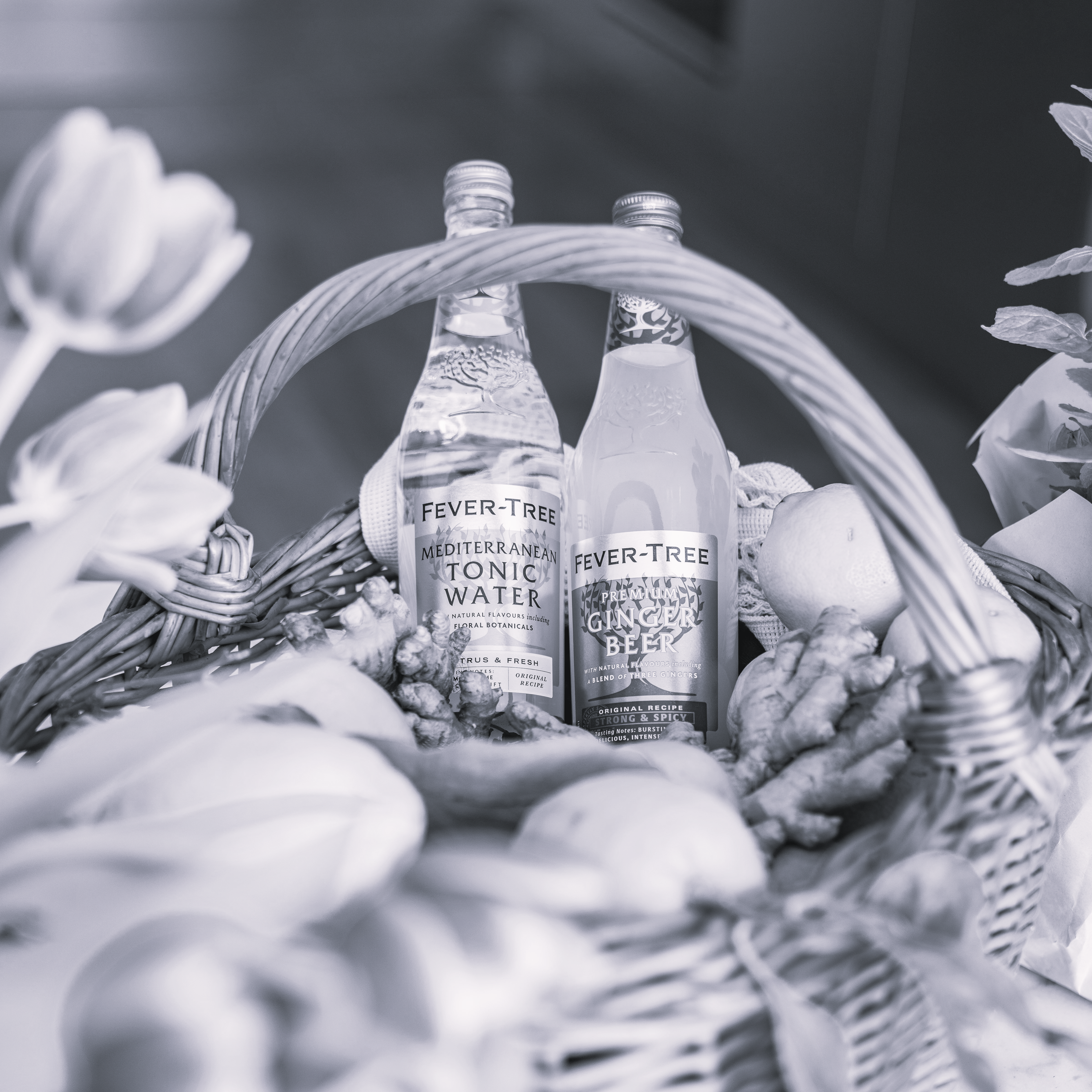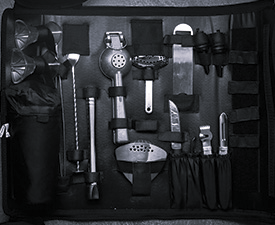Frost damage is a significant production hazard in nearly all locations of temperate zone viticulture. Damage to young, tender vine shoots during spring is a problem in cold climates areas and in vineyards with frost pockets. Cold air is heavier than warm air and it will settle and form layers with the coldest air near the ground. If the vineyard site is flat, or worse, if it is in a low spot with high ground around, the cold air will settle or flow there. By contrast a sloping site allows the heavier, cold air to flow down the slope and is replaced by warmer air from above.
Grapes are more sensitive than many other plants, plus the tolerance of grape tissue to cold temperatures is relative to their stage of growth. Damage to unprotected green tissue occurs when temperatures are at or below 0C for extended periods. Frost damage often varies dramatically from plant to plant. Even in low areas, it is not uncommon to see one vine barely affected and an adjacent vine much more severely damaged.
Vines that have not broken bud are less prone to damage - however, susceptibility depends on the stage of bud swell; once sap starts to flow, buds are less hardy. A bud that is just swelling can tolerate temperatures in the low -4C with little damage. But as soon as the bud has broken and the leaves unfold, the tissue is sensitive to temperatures of 0C. Grape varieties may also vary in their response to freezing temperatures.
Damage usually shows as wilted shoot tips and some leaves may turn brown and dry out, but older leaves may remain alive and display a pattern of flecking with sectors of yellow, white and green.
In many cases the vines will recover as secondary buds at the base of the damaged shoot will break and produce healthy shoots for this growing season. These shoots are seldom as fruitful as the original primary shoots, so fruit yields will be greatly reduced.
While the technologies to achieve vine protection exist - both economic and practical considerations limit their application.
